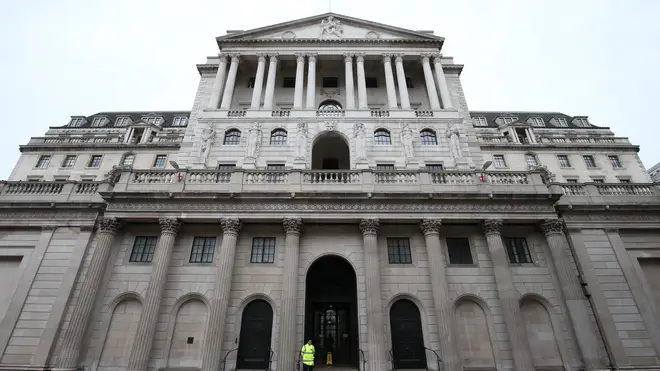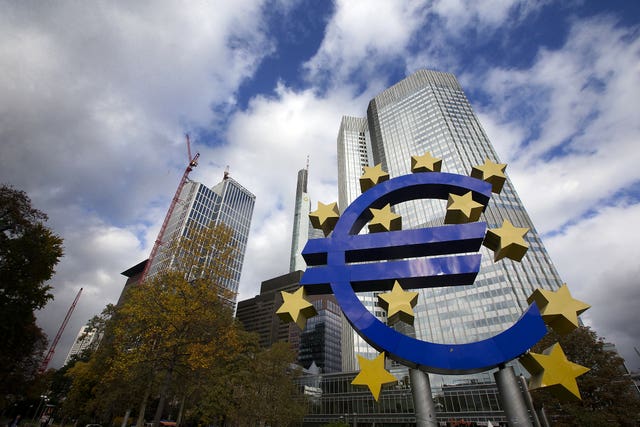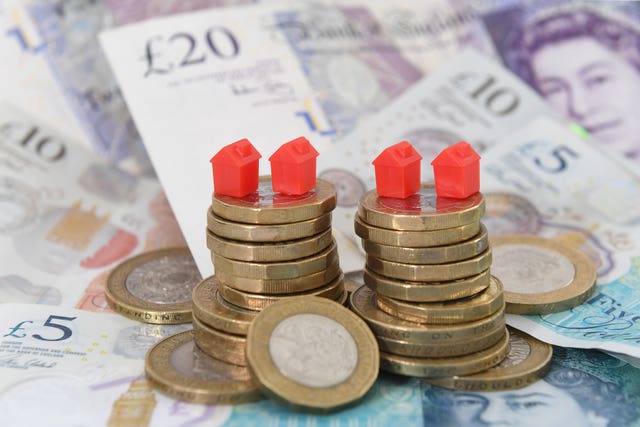
Matthew Wright 7am - 10am
23 October 2020, 09:54

With Barclays suggesting it could cope with negative rates, we take a look at what any move by the Bank of England means for banks and consumers.
Barclays Bank has said it would be ready for any negative interest rates, after the Bank of England confirmed it is looking at the option to see whether it could help the economy through the coronavirus crisis.
The UK has never before taken rates below zero, but with rates already at the historic low of 0.1%, policymakers have few tools left in the box to help offset the economic hit from the pandemic.
Here we look at the key questions surrounding the negative interest rate debate:
– What are negative interest rates?
A negative interest rate is when a central bank’s base rate goes below 0%.
The base rate determines how much interest the central bank pays to financial institutions that hold money with it, and what it charges them to borrow.
Lenders use the base rate to price the interest they pay on savings deposits and the interest they charge on loans and mortgages.

– Why is the Bank of England considering negative interest rates?
Since the financial crisis, many central banks around the world have already taken their base interest rates below zero, including the European Central Bank and its counterparts in Japan, Denmark, Sweden, and Switzerland.
Negative rates have been used to bolster flagging economies and the Bank is looking at whether it could be used on these shores to help the UK weather the impact of the coronavirus pandemic and lockdown restrictions.
– How does it help boost economic growth?
The idea is to encourage banks to increase lending to households and businesses, because the Bank of England would charge them money to hold their cash.
It is also designed to spur households and businesses on to spend, rather than leave money in their bank accounts, where the value would be eroded by inflation.
Another benefit is that negative rates would make it cheaper for the Government to borrow money, which would help cut the ballooning bill for Chancellor Rishi Sunak’s Covid-19 spending spree.
– What would negative interest rates mean for savers?
While banks would be charged for keeping their cash with the central bank, it is thought highly unlikely that retail savers would have to pay a fee on deposits.
Competition in the market is widely seen as preventing this from happening, as banks would not want to lose savings business.
But big companies could well be expected to pay fees on deposits, while some countries with negative rates impose charges on savings over a certain amount.
– What about mortgage borrowers?
Borrowers may get excited about the prospect of being paid to take out a loan, but this may not be a reality for most.
A negative rate mortgage was launched in Denmark last year, effectively paying borrowers 0.5% a year to take out a 10-year loan.
But experts see this as being very unlikely in the UK mortgage market.
For most British borrowers, a negative base rate will mean little as so many are on fixed-rate deals.
For those on tracker mortgages, there is likely to be a minimum rate payable which will prevent the interest payments ever going below zero.

– What are the downsides of negative interest rates?
One major concern is that sub-zero rates can squeeze bank earnings by narrowing the gap between money made on loans and paid out on savings.
This could potentially affect their ability to lend and have a knock-on effect on the stability of the UK financial system.
As seen in the financial crisis, keeping bank lending flowing is vital for the entire world economy.
There is also a worry that a negative rate environment may encourage savers to withdraw their deposits and stash their cash under the mattress instead.
This again could hit bank profits and UK financial stability.
– Are we likely to see negative rates any time soon?
The Bank wrote to all the major lenders and building societies on October 11 to ask if they are ready should rates go negative amid fears it could play havoc with their systems.
Banking systems are not set up for rates to go to zero or below as they were designed for positive values.
It would likely take weeks for banks to get their systems prepared, while the Bank itself is also still researching whether or not the side-effects outweigh the benefits of negative rates.
The Bank’s own chief economist has said it would be many months before the Bank’s research on the feasibility of negative rates is complete, suggesting 2021 at the earliest for the tool to even be considered on these shores.